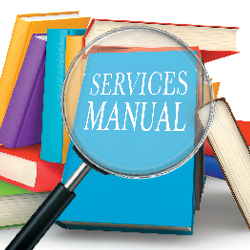|
REGISTRATION REQUIRED
exhibiting 101
 Getting on the Same Page
Hearing conflicting messages from your exhibit program's stakeholders? Here are my tips for getting everyone aligned on show objectives. By Betsy Earle
Raise your hand if this sounds familiar: You send out an inter-office email asking for input on an upcoming trade show. Your marketing cohorts respond saying that the No. 1 priority is highlighting the company's new rebrand. Two hours later, the vice president of sales chimes in stating that reps are hungry for leads, so booth staffers need to scan every badge belonging to a warm body. Then another executive pokes her head in your office and reminds you about the two conference sessions she's leading and how it's crucial that attendance is high. And at the end of the day, your inbox chimes again. This time it's the regional sales lead expressing the need for substantive meetings with existing clients in order to acquaint them with your company's new widget. In short, four stakeholders give you four different views on what is most important. And it's up to you to appease them all – right?
Well, lower your hand and take comfort in the fact that you're not alone. Trade show managers often have to consider the wants and needs of multiple parties that may desire things that are diametrically opposed to each other. Consider the situation I just described. If staffers are told to prioritize badge scans, how can they also be expected to simultaneously facilitate deep-dive meetings that may last 30 minutes or more? And how should your booth be set up? An exhibit designed for generating traffic looks far different than one geared for private appointments. To make your program an all-around success, it's essential to gather your key stakeholders before a show and get them aligned on the company's objectives. Once you get your team assembled, ask yourselves the following questions. Why are we going to the show in the first place? There are a ton of reasons why you might exhibit at a trade show. A common one I hear from exhibitors is, "Well, because everyone else is going." While I totally understand not wanting to hand your competitors any advantage by not attending, this can-not be the only reason for exhibiting. For one thing, this is not a measur-able motivation. Instead, come up with more specific objectives that will help you create measurable results. Maybe you might attend because you want to improve awareness for your organization or a specific brand that falls under your corporate umbrella. Maybe you want to let the attendees know that you're offering a new prod-uct or service. Or perhaps a particular trade show offers opportunities to build rapport with clients you already have and touch base with distributors. Whom do we want to connect with? This is an extremely important item to discuss with your team in advance. Not everyone at the show is likely part of your target audience. Your target audience, by definition, is the select attendees at which your program is aimed. That doesn't mean outliers won't engage, but the majority of your focus should be on these people. Your perfect customers may be needles in the haystack, or maybe half of the attendees are distributors who can potentially resell your product. Either way, ask each stakeholder about whom it is they want you to be targeting – and why – and then research how many of those people are likely to be there. (Asking your show rep for detailed attendee info is a great place to start.) This is also the time to clarify how your stakeholders define that all-important word: lead. Is a lead anyone whose badge you scan, or does the team think the label should apply to someone more specific, say an attendee interested in making a purchase within the next six months? Do you want to distinguish a sales lead (a show-floor contact that a sales rep should connect with immediately) from a marketing lead (an attendee likely at the very top of the sales funnel who would benefit from nurturing)? These are important – some might say obvious – questions that far too many organizations overlook, and arriving at a consensus before the exhibit hall opens benefits everyone. What are our objectives? First, let's clarify some commonly misconstrued verbiage. An objective is an outcome you desire, and it should be SMART, as in specific, measurable, attainable, relevant, and timely. A strategy is how you are going to go about achieving your objective. This starts with booth design, product or service presentations, and understanding why you're going to the trade show and investing all this time and money in the first place. Tactics, on the other hand, are the actual tools you use to accomplish the objectives that you've strategized for. For example, if your objective is to present your new product to 200 attendees, your tactic might be to run 10 live demos, each targeting 20 booth visitors, during the show. Let's say you're determined that a lead counts as a badge scan of an attendee who had a meaningful interaction in your exhibit. What is a SMART objective for total leads collected? Think about how long a quality conversation with a potential customer might be. Assume that it takes 10 minutes per conversation, which makes it possible for staffers to have six quality chats per hour. If the exhibit hall is open for five hours and you are giving your booth staff a 30-minute lunch break, one rep could effectively engage with 27 people over the course of a day. If it's a three-day show and you're sending two reps, setting an objective of collecting 162 leads (as defined by your stakeholders) is specific, measurable, attainable, and relevant. This is a logical place for you to start when setting goals, but keep in mind that there will undoubtedly be variables such as traffic flow, educational sessions happening during show hours, an extra-long conversation, etc. What are we bringing to the show? I have seen many exhibits that were beautiful and had lots of bling but gave me no clue as to what the companies actually offered and why I should care. It's extremely important that you have a focused space that enables attendees to easily understand what you are trying to present and why it matters to them. If your objectives are crystal clear, this will become much easier, as those objectives will ultimately drive what goes where. Allow your key stakeholders to openly discuss what needs to be shown at the trade show. Ask ques-tions such as, "What products or services absolutely must be featured in the exhibit?," "Is there a particular product or service that should be our primary focus?," and "Is there anything new we should highlight: a software upgrade, product extension, extended service plan, special pricing, etc.?" While attendees are always looking for what's new, it's not uncommon for sales teams to focus on tried-and-true best-selling products most showgoers have seen before. Of course, not every company offering can be brought to the show, let alone be front and center in the exhibit. Once you've determined what your stakeholders want in the booth, you'll likely need to identify a key constituent or two who can weigh in on the final decision as to which products and services will be featured at the show. Depending on the size and nature of your organization, this could be anyone from the sales director to the president and CEO. But regardless of whom you partner with, remember that 1) what's showcased in the booth should always tie back to your objectives, and 2) an exhibit isn't a garage sale, so choose judiciously. How should we set up the exhibit so it supports our objectives? Finally, product displays alone don't make an exhibit, so remember to keep your defined objectives top of mind when planning your booth. If high-volume traffic is a goal, how can your exhibit's layout and activations support that? It's easy to think that attendees will somehow be magically drawn to your space because, well, your company is awesome, right? But if lead volume is an objective, nine times out of 10 you'll have to give passersby a reason to stop and engage. Maybe that reason could be a clever booth theme, an aisle-side engagement, or a head-turning graphic. On the flip side, if your priority is one-on-one time with valuable clients, then you'll want to focus on comfortable meeting spaces, hospitality, and premium giveaways. My point here is that while there is such a thing as too many cooks in the kitchen, your various stakeholders should be able to provide you with keen insights into how to tailor the exhibit to achieve your objectives. Perhaps a cohort in digital marketing knows of a meme that's been making the rounds in the industry and could make for an arresting graphic. Or maybe a sales executive relays that most of his clients are avid golfers, so having a putting station in a meeting room would be a great way to engage with VIP booth visitors. Soliciting your stakeholders' input on elements such as exhibit design and in-booth activations will both take the pressure off of you to come up with winning ideas all by yourself and make others in your company feel invested in your program's success. I frequently joke that my job is like herding cats, but I say that with love. Your program's stakeholders want to feel heard and considered just like you do. By sitting down at the beginning of the planning process and getting everyone aligned, you're all going to have a more productive and enjoyable show-floor experience. E  Betsy Earle, CTSM
Betsy Earle, CTSMmanaging director and founder of Event Driven Solutions LLC. Earle obtained her MBA at the University of Miami and earned her Diamond-level CTSM designation in 2018. Exhibiting101@exhibitormagazine.com
|
|
|
||||||||||||||||||||||||||||
|
|
||||||||||||||||||||||||||||
|
TOPICS Measurement & Budgeting Planning & Execution Marketing & Promotion Events & Venues Personal & Career Exhibits & Experiences International Exhibiting Resources for Rookies Research & Resources |
MAGAZINE Subscribe Today! Renew Subscription Update Address Digital Downloads Newsletters Advertise |
FIND IT Exhibit Producers Products & Services All Companies Get Listed |
EXHIBITORLIVE Sessions Exhibit Hall Exhibit at the Show Registration |
ETRAK Sessions Certification F.A.Q. Registration |
EDUCATION WEEK Overview Sessions Hotel Registration |
CERTIFICATION The Program Steps to Certification Faculty and Staff Enroll in CTSM Submit Quiz Answers My CTSM |
AWARDS Exhibit Design Awards Portable/Modular Awards Corporate Event Awards Centers of Excellence |
NEWS Associations/Press Awards Company News International New Products People Shows & Events Venues & Destinations EXHIBITOR News |
||||||||||||||||||||
|
||||||||||||||||||||||||||||






